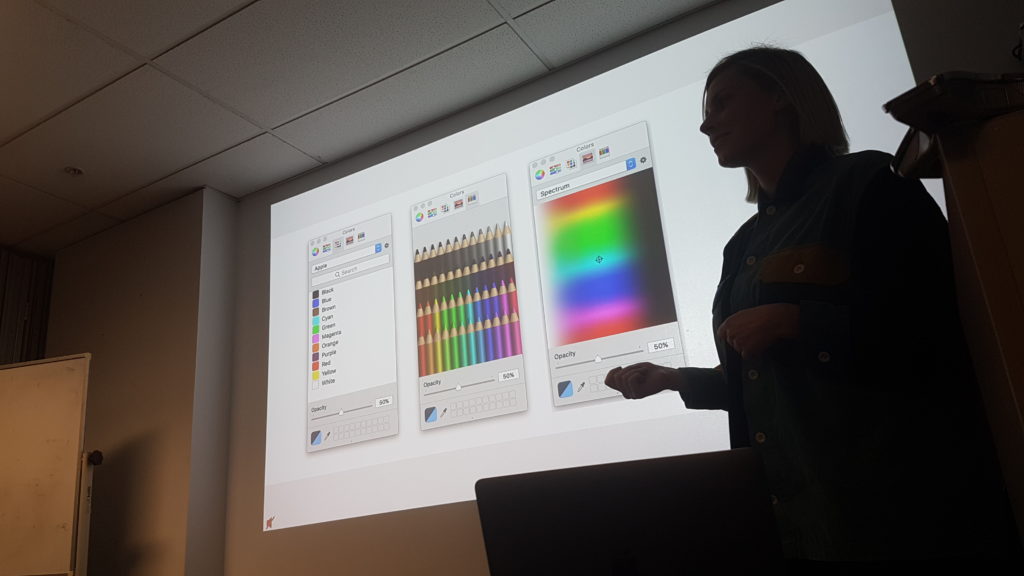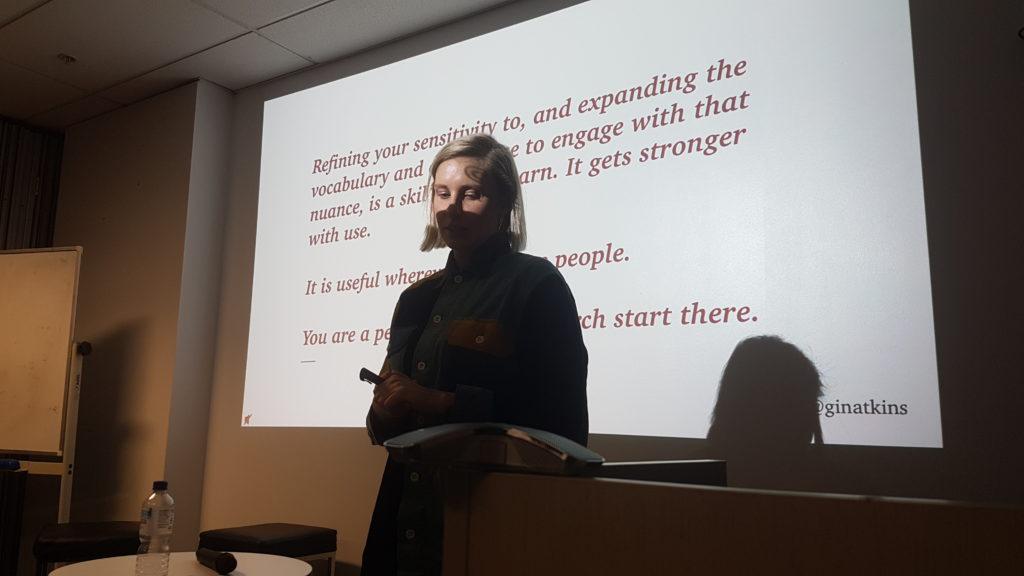What does it mean when we say we’re ‘bringing human experiences’ to work? And why should we?
Gin Atkins, Head of Product at The Conversation kicked off the evening with:
We know people are at the core of what we do. Yet, our best developers, designers, and product managers are rarely able to talk about people with as much confidence and nuance as they talk about ruby, typefaces or commercial strategy.
Over the course of the evening, Gin introduced us to 3 ways to help draw out experiences & bring them into our work.
Energy Graph – a tool to help us think and talk about experiences.
The energy graph is a tool used in acting to show the spectrum of experience. Gin learned it from Paul Currie, the co-founder of The Reach Foundation and Lightstream Entertainment.
Using several clips of music, Gin had us mark how each music clip made us feel on the graph & compare with others sitting at our table. There was definitely differences in what made us happy or sad and how energised (or not) it made us feel. Though apparently I’m the only person who gets annoyed by the Lion King soundtrack! To contrast, one attendee recounted how the Lion King brings up memories & great feelings of her daughter based on past experiences and you could see how happy she was as she told us about this. Imagine the 2 of us in a workshop where the Lion King soundtrack was playing in the background… she’d be in a great frame of mind where I’d be feeling agitated. Could that affect the results of the workshop?
Think about how music affects you. Consider a song you hate vs one you love vs one that is unoffensive. To bring this back to the office, how do the meeting rooms make you feel? Does your research participant or client feel comfortable?
You can see the graph in the slides below.

Levels of Emotional Design – a framework
Next Gin talked about Don Norman’s 3 levels of (emotional) design which provides a framework to document experiences.
This combines how a product looks & makes us feel when we engage with it (initially & ongoing) with our conscious thought about the product (for example – does it represent what I want to project to the world?)
Gin likes to use Jobs to be Done instead of User Stories to capture these elements. She feels there’s too many assumptions in the ‘As a…’ and ‘I want to…’ of user stories. A JTBD statement focuses on the situation, motivation & expected outcome – ‘when (situation), i want to (motivation) so I can (expected outcome)’.
Using the classic MP3 player example, Gin showed how using emotional design changes what you build.
functional description – When I’m listening to music I want a device that holds all my music so I can listen to anything at any time.
emotional – When I’m listening to music I want a device that looks good so I feel as cool as the artists I’m listening to
Draw on your own experiences – a call to action to help us get better
Drawing on anthropology, there’s etic & emic research of groups.
An etic view of a culture is the perspective of an outsider looking in. This can be problematic as people act differently when they know people are observing them.
An emic view of culture is the insider’s view – when you are part of the group. This is where we are with our teams, in our work lives.
We can use our insider’s view to bring more human experiences into our work & our products.

Thank you to Gin and Carsales, our host for the evening!
FYI, with Leading the Product happening in October, the next Product Anonymous event is November 22nd. RSVP here.
Resources
Also mentioned during the evening – the Overton Window
 Thank you Culture Amp for hosting!
Thank you Culture Amp for hosting!

